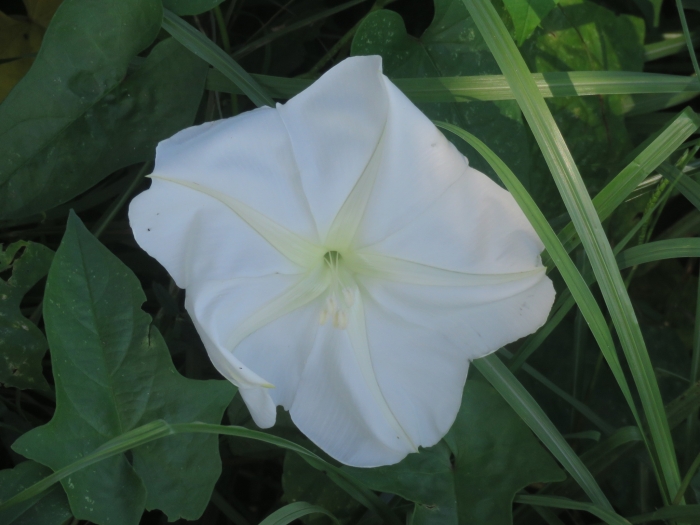Tropical White Morning-Glory
(Ipomoea alba)
Tropical White Morning-Glory (Ipomoea alba)
/
/

Diego Carús
Public Domain













































Estimated Native Range
Summary
Moonflower is valued for its showy, evening-blooming flowers and its ability to create a quick screen or cover. It is often used in gardens for vertical interest on trellises, arbors, and fences. In cultivation, it prefers full sun but can tolerate part shade, and requires medium amounts of water with well-draining soil. While it can be grown in northern climates as an annual, it flowers best under shorter summer days, often not setting buds until early autumn when daylight is near 12 hours. Propagation is typically by seed, which should be nicked and soaked before planting to enhance germination. Gardeners should be aware that Ipomoea alba can be potentially invasive outside its native range, and it is advisable to check local regulations before planting.CC BY-SA 4.0
Plant Description
- Plant Type: Vine
- Height: 10-15 feet
- Width: 3-6 feet
- Growth Rate: Rapid
- Flower Color: White
- Flowering Season: Summer, Fall
- Leaf Retention: Deciduous
Growth Requirements
- Sun: Full Sun, Part Shade
- Water: Medium
- Drainage: Slow, Medium
Common Uses
Bee Garden, Bird Garden, Butterfly Garden, Deer Resistant, Edible*Disclaimer: Easyscape's listed plant edibility is for informational use. Always verify the safety and proper identification of any plant before consumption., Fragrant, Hummingbird Garden, Low Maintenance, Potted Plant, Showy Flowers
Natural Habitat
native to tropical and subtropical regions of the New World, including Mexico, Central and South America, and the Caribbean
Other Names
Common Names: Moonflower, Moonvine, Maanblom, Mondblüte, Weiße Prunkwinde, Månvinda, Batatillo, Yakai-SŌ, Yue Guang Hua, Yoru-Gao
Scientific Names: , Ipomoea alba, Calonyction aculeatum, Ipomoea noctiflora, Ipomoea bona-nox, Calonyction speciosum, Calonyction bona-nox, Calonyction album, Calonyction aculeatum f. apopetalum, Ipomoea aculeata
GBIF Accepted Name: Ipomoea alba L.